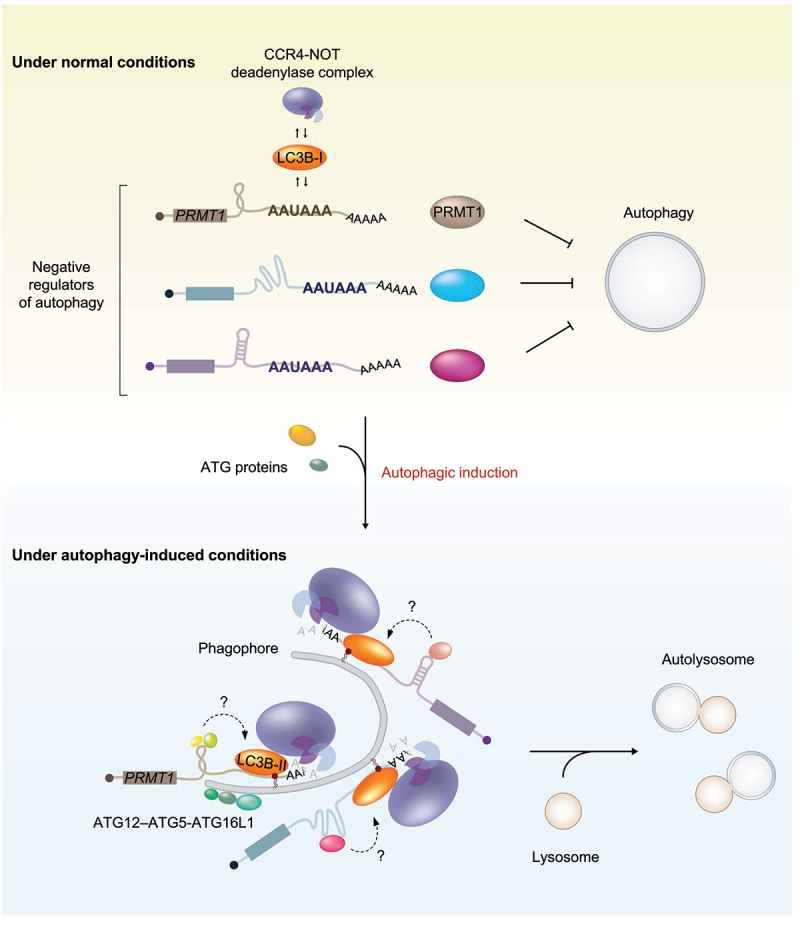Figure 1.

A proposed model illustrating the dual role of LC3B upon autophagic induction. Under normal conditions, LC3B binds to the AAUAAA motif in the target mRnas; however, LMD is not efficient because of a weak interaction between LC3B and its target mRnas, a lack of LC3B conversion, and inefficient association with LC3B and the CCR4-NOT complex. Immediately after the autophagic induction, LC3B-I is conjugated to phosphatidylethanolamine and converted into LC3B-II at the phagophore membrane causing an expansion to form an autophagosome. Concomitantly, an interaction between LC3B and LMD substrates becomes stronger and recruits the CCR4-NOT deadenylase complex. Consequently, LMD substrates (such as mRnas encoding proteins that function as negative regulators of autophagy) are destabilized before the formation of autolysosomes, facilitating efficient autophagy. During this process, RNA secondary or tertiary structures upstream of the AAUAAA motif and the RBPs associating with the structures may crosstalk with the downstream LC3B-II complex for efficient LMD.
